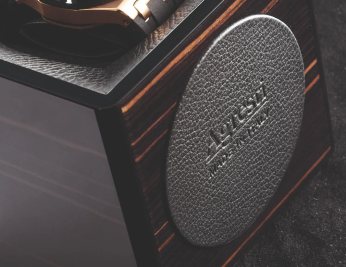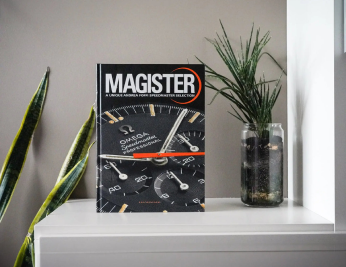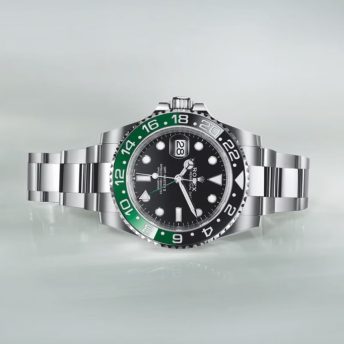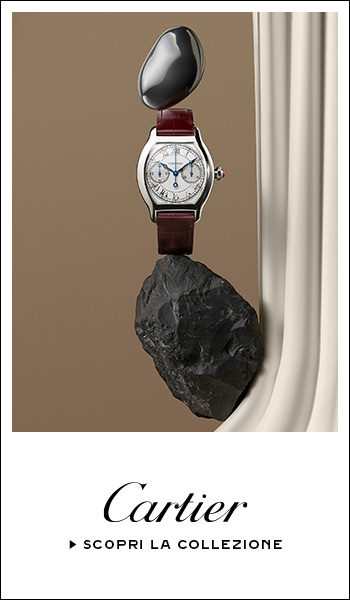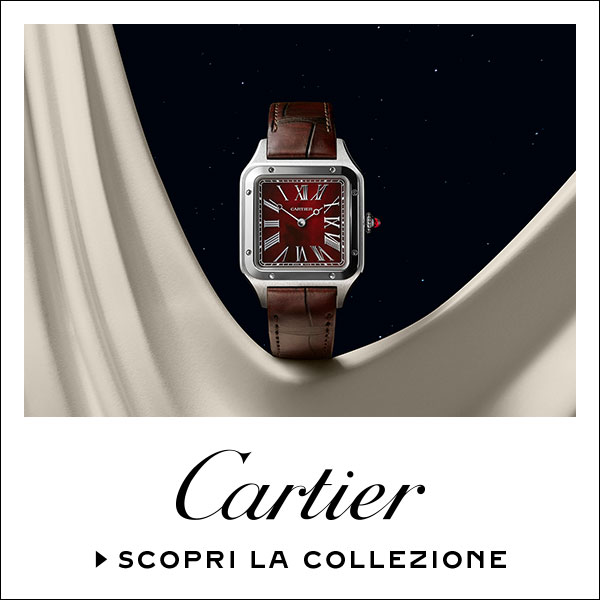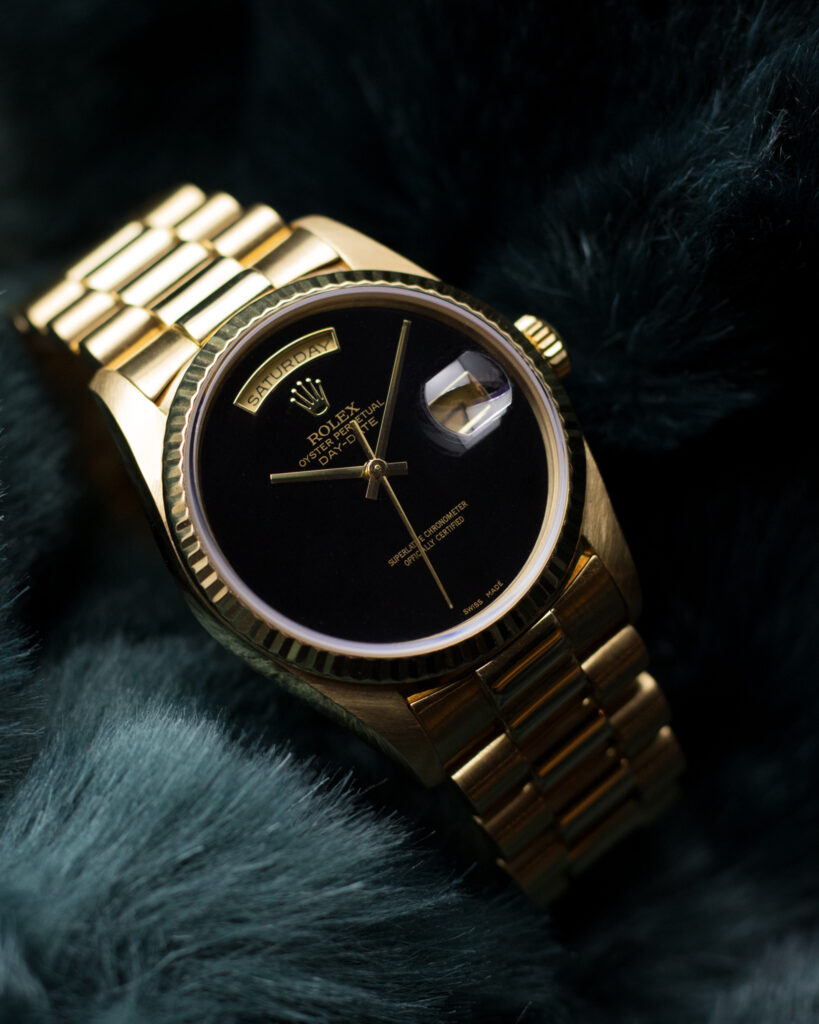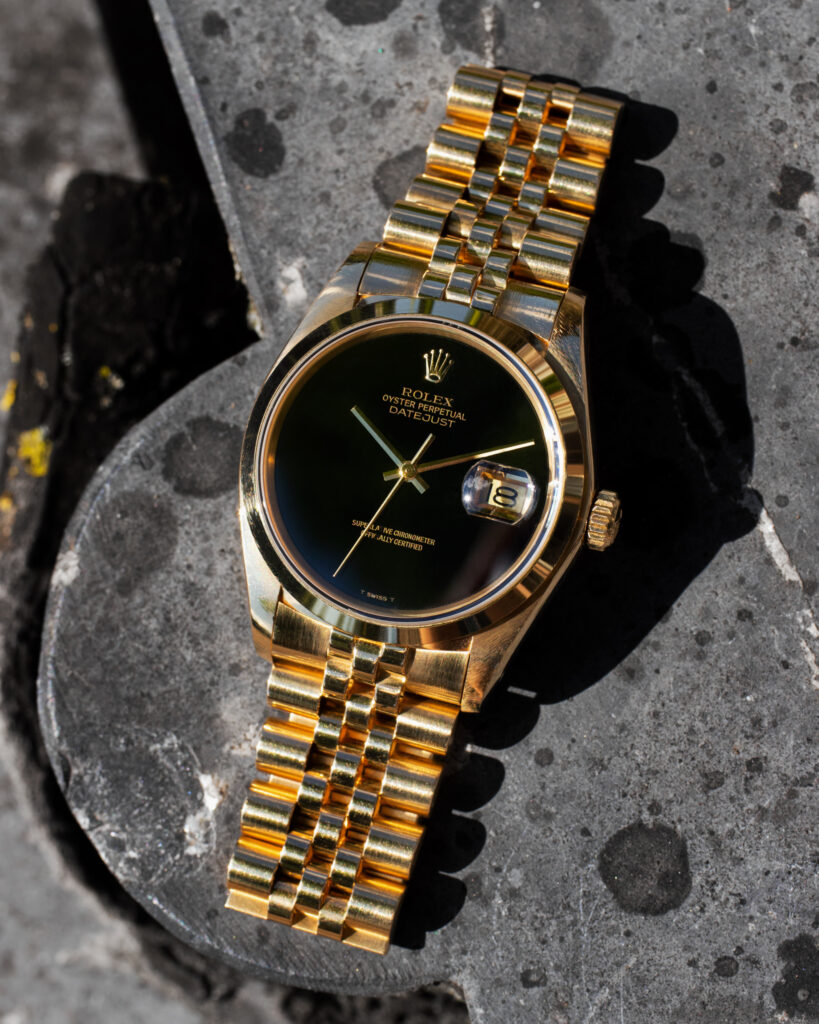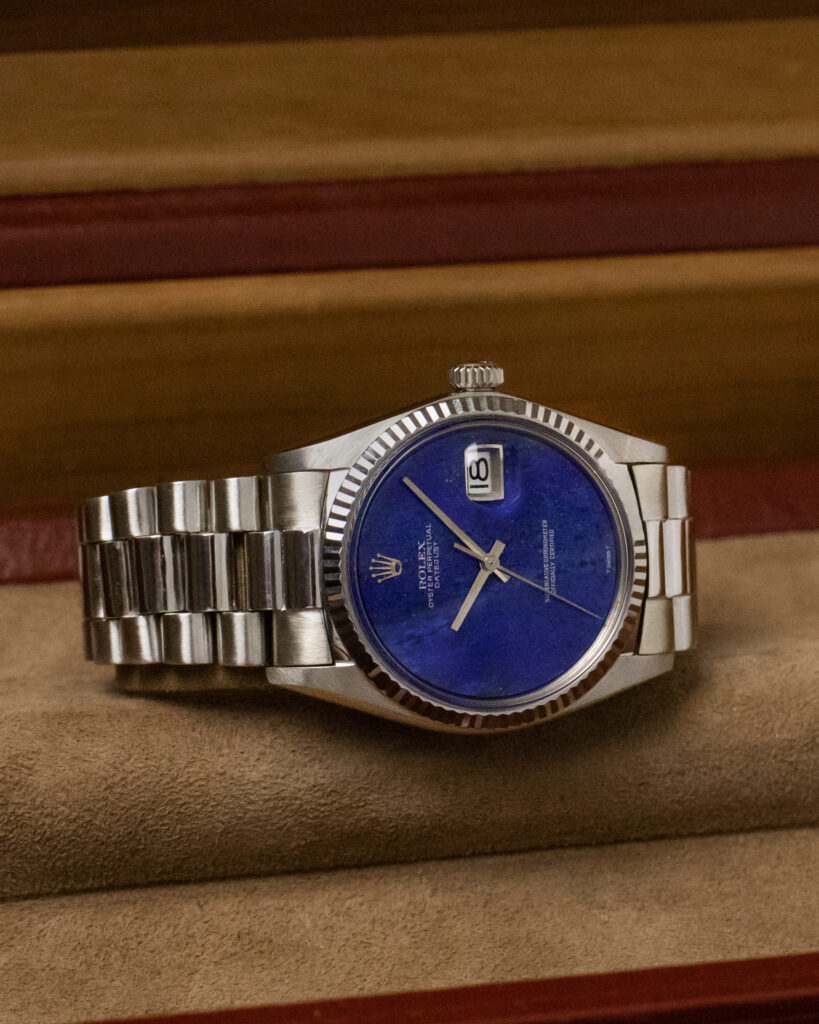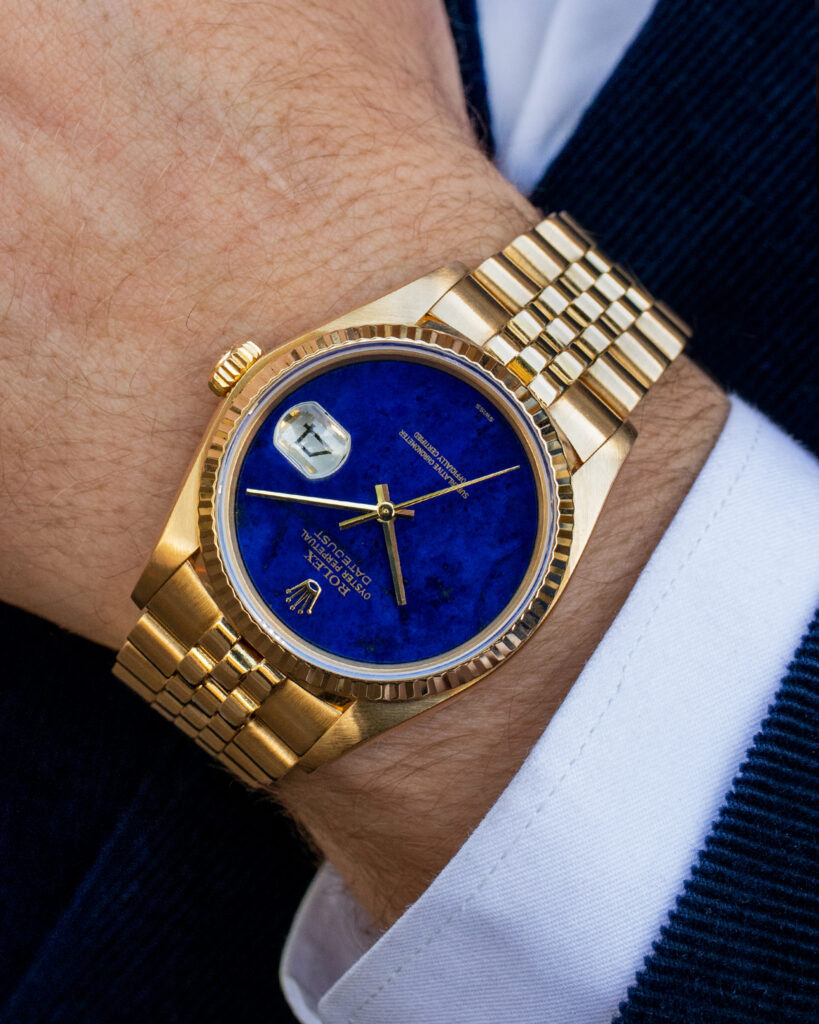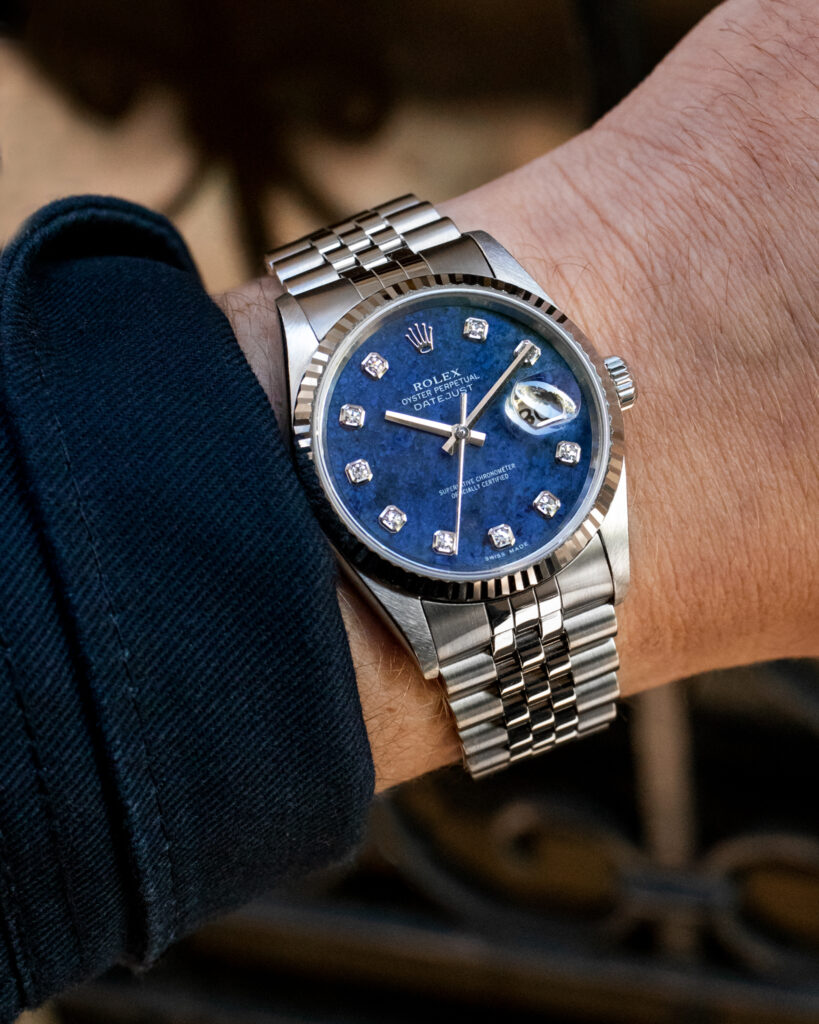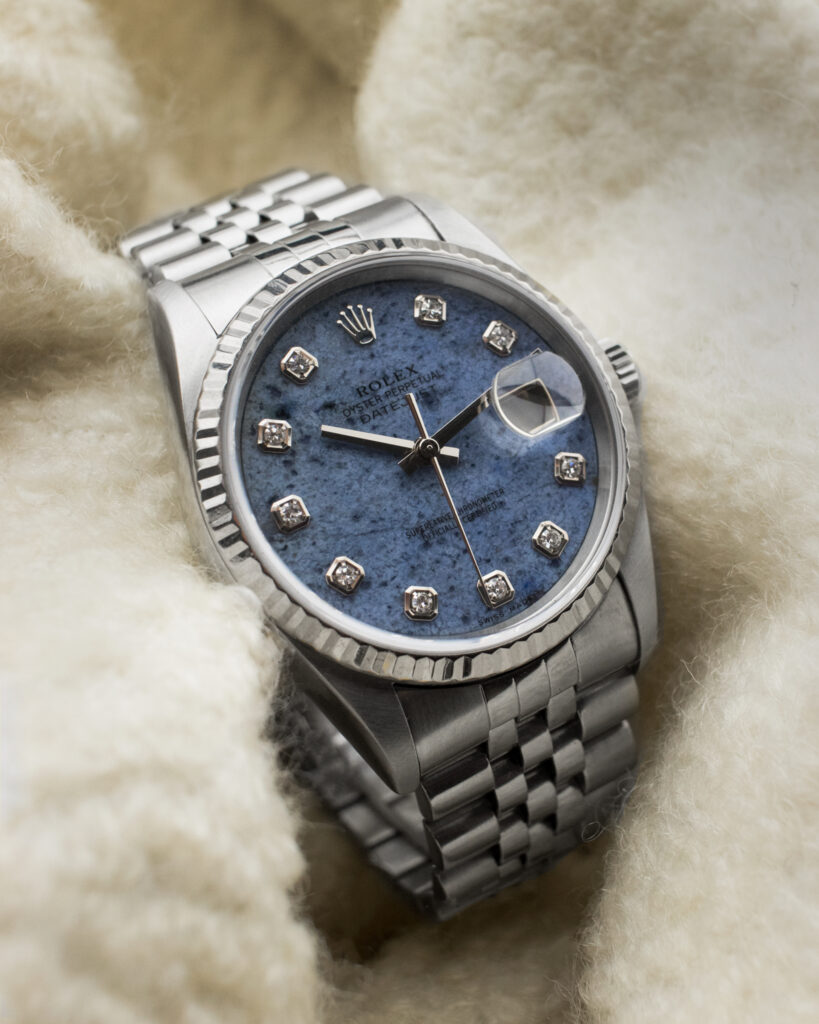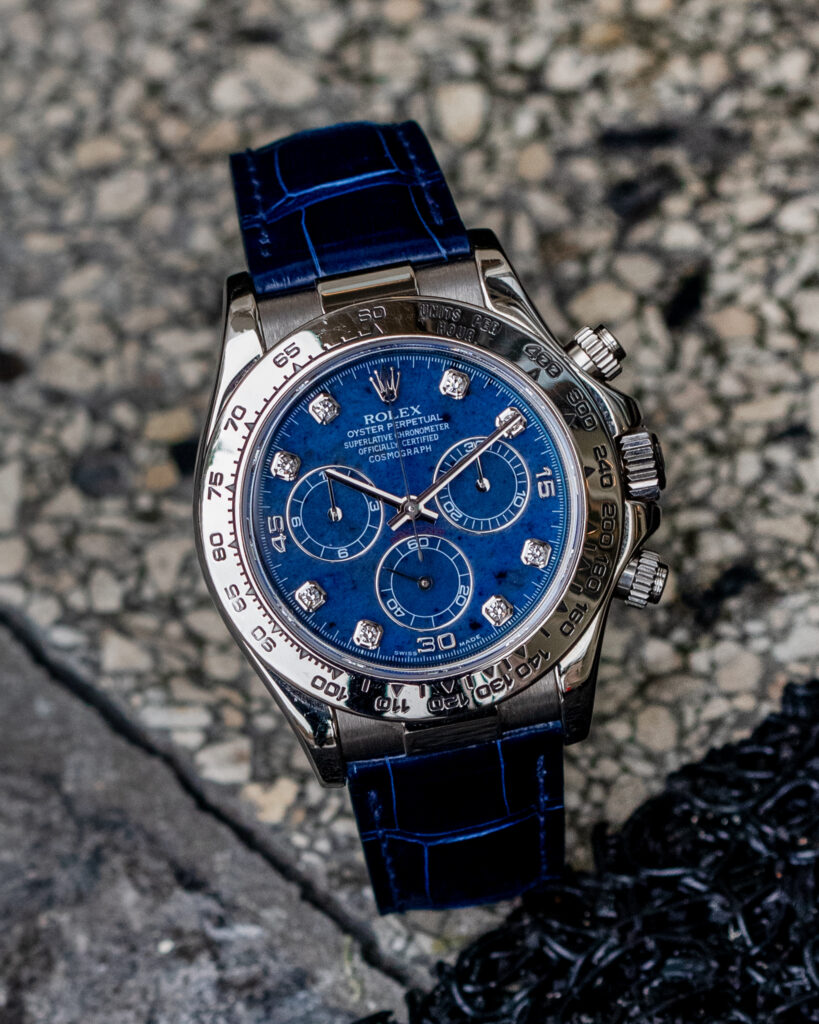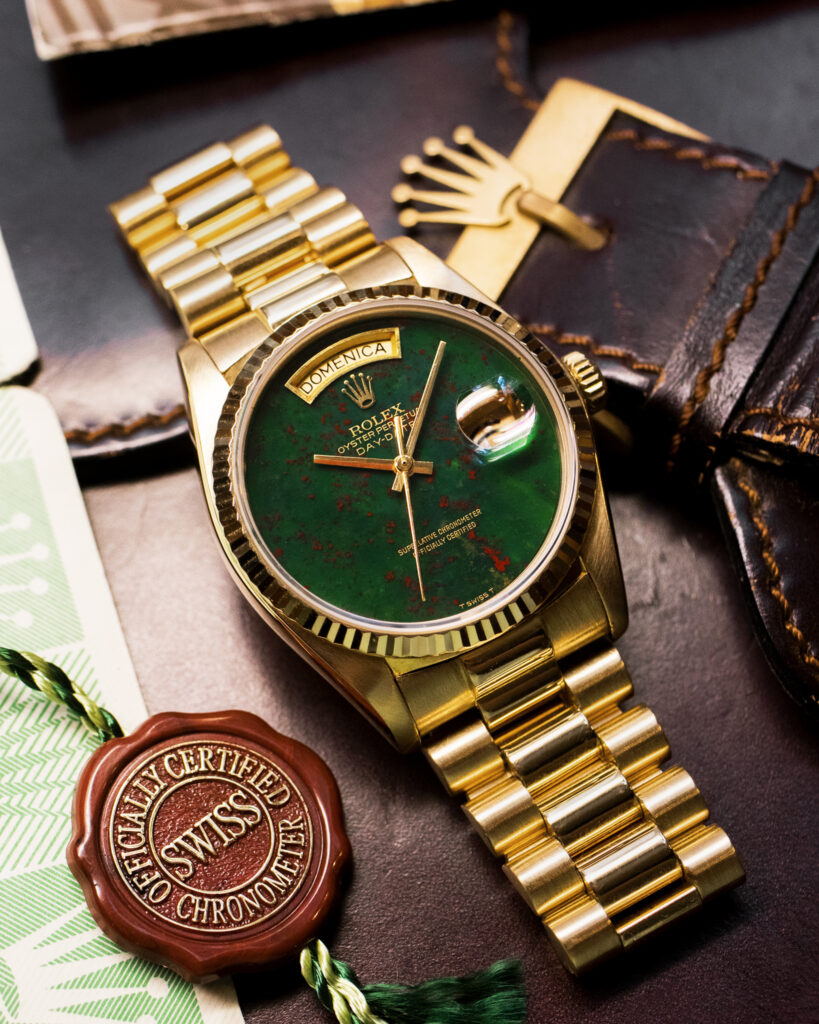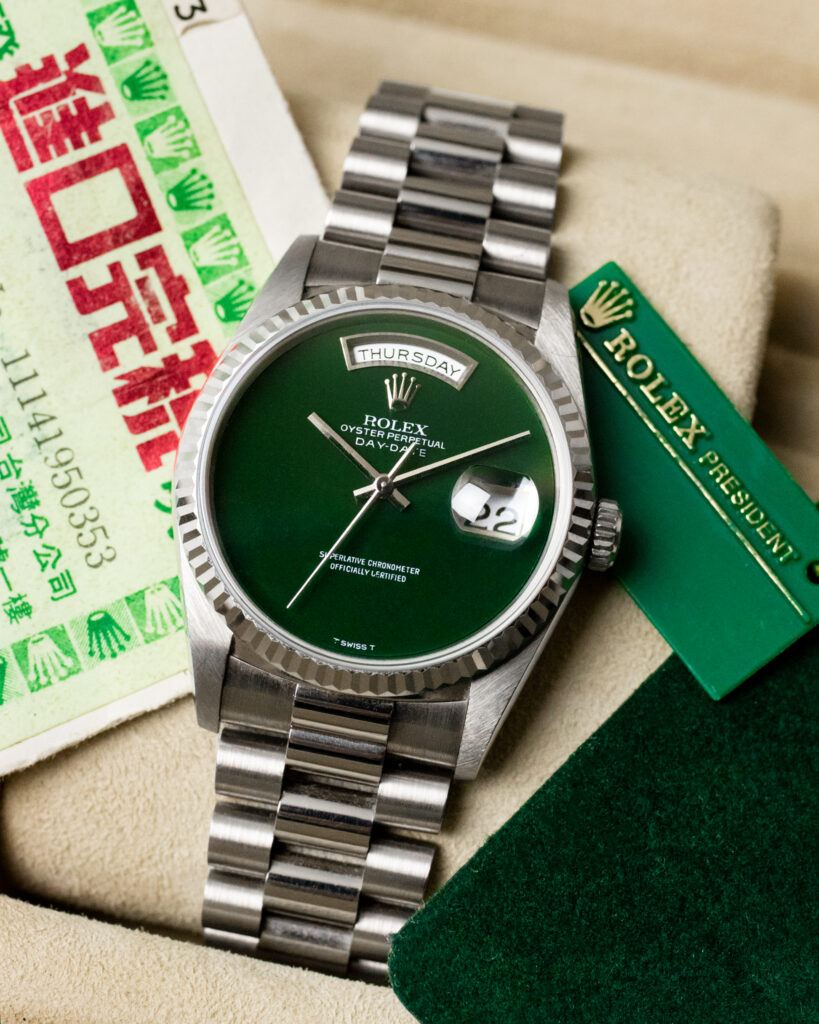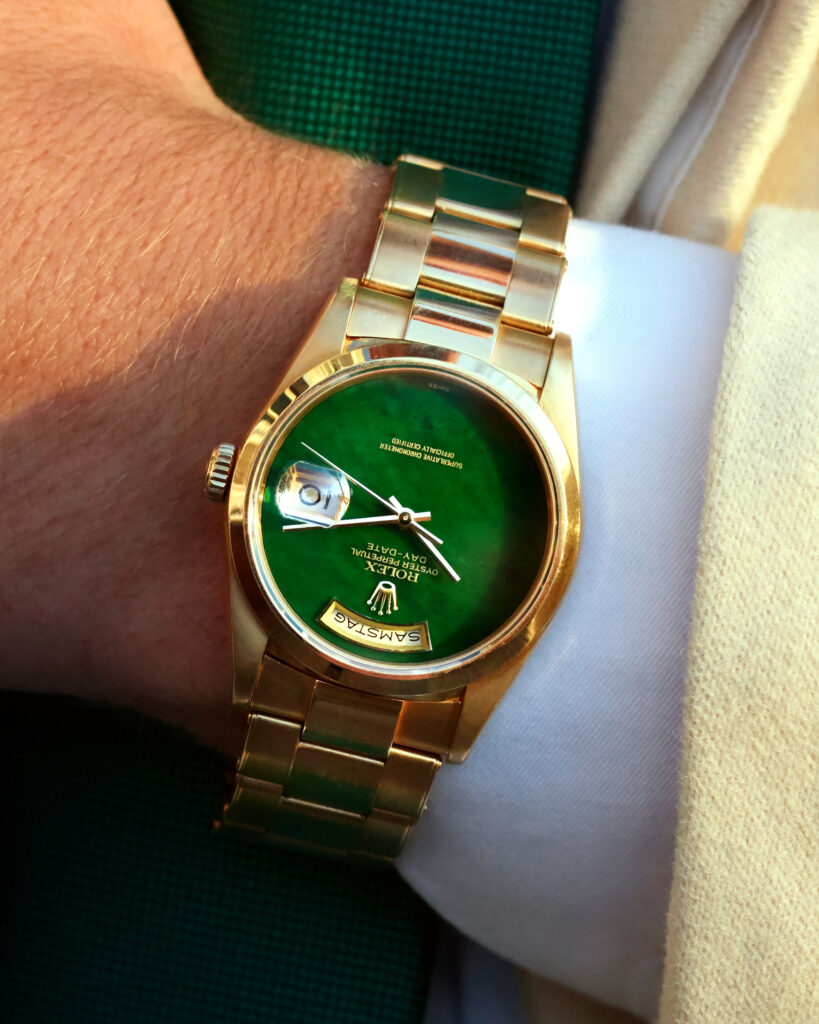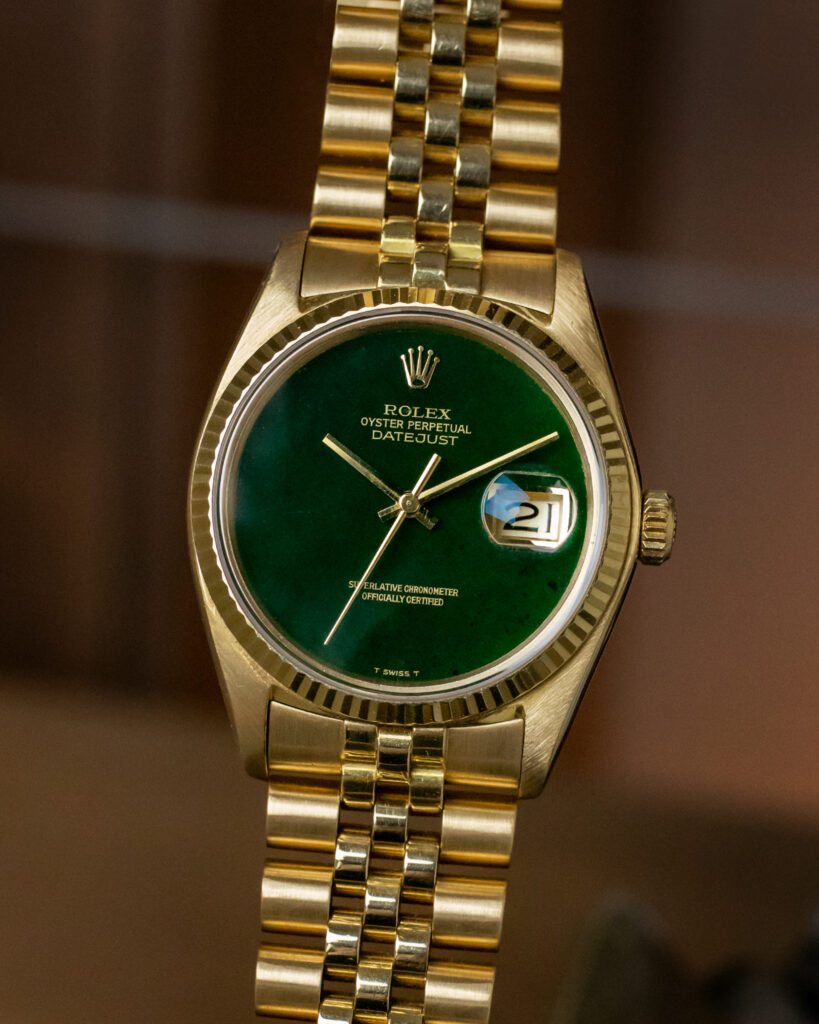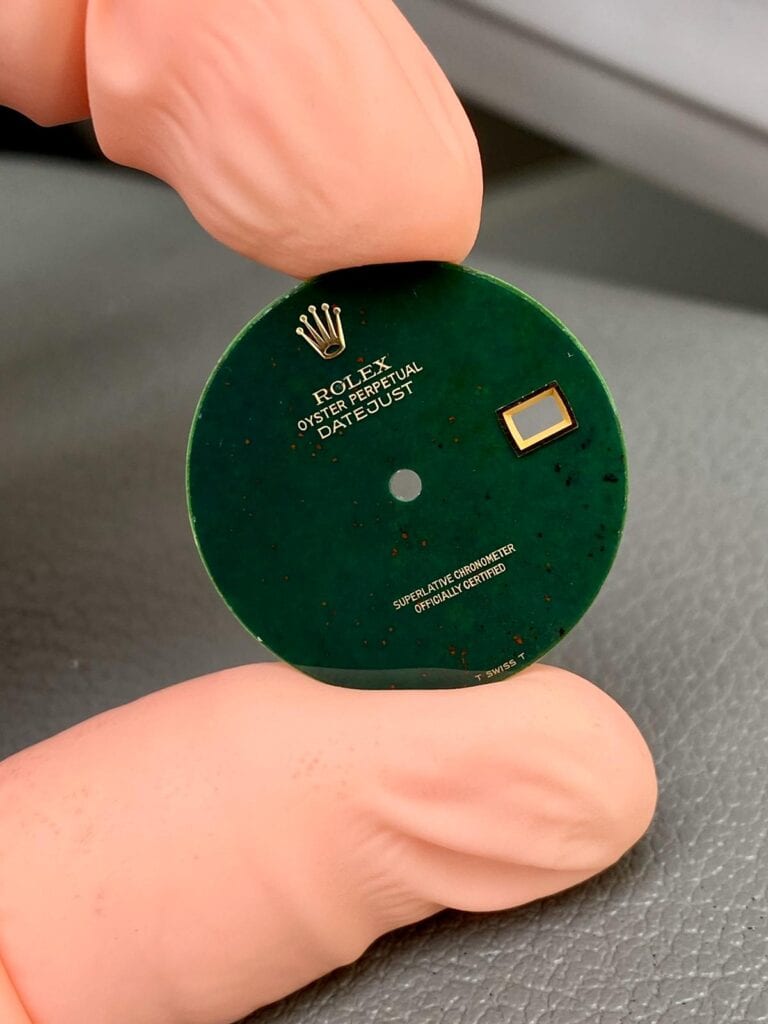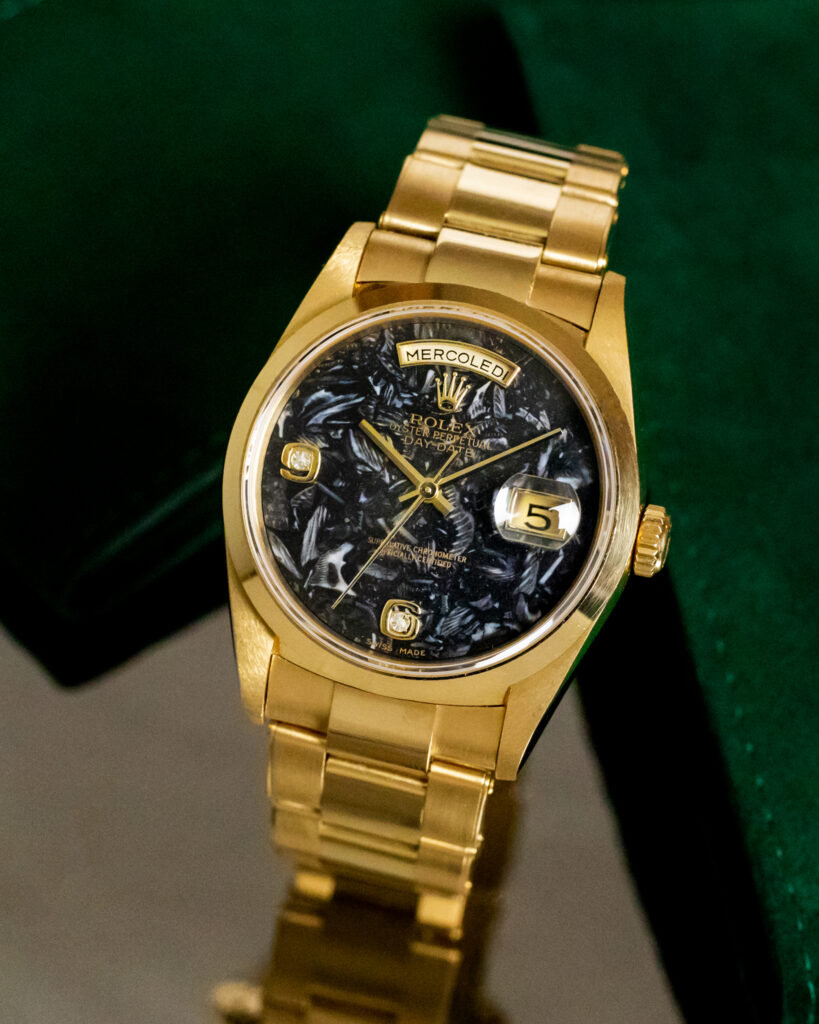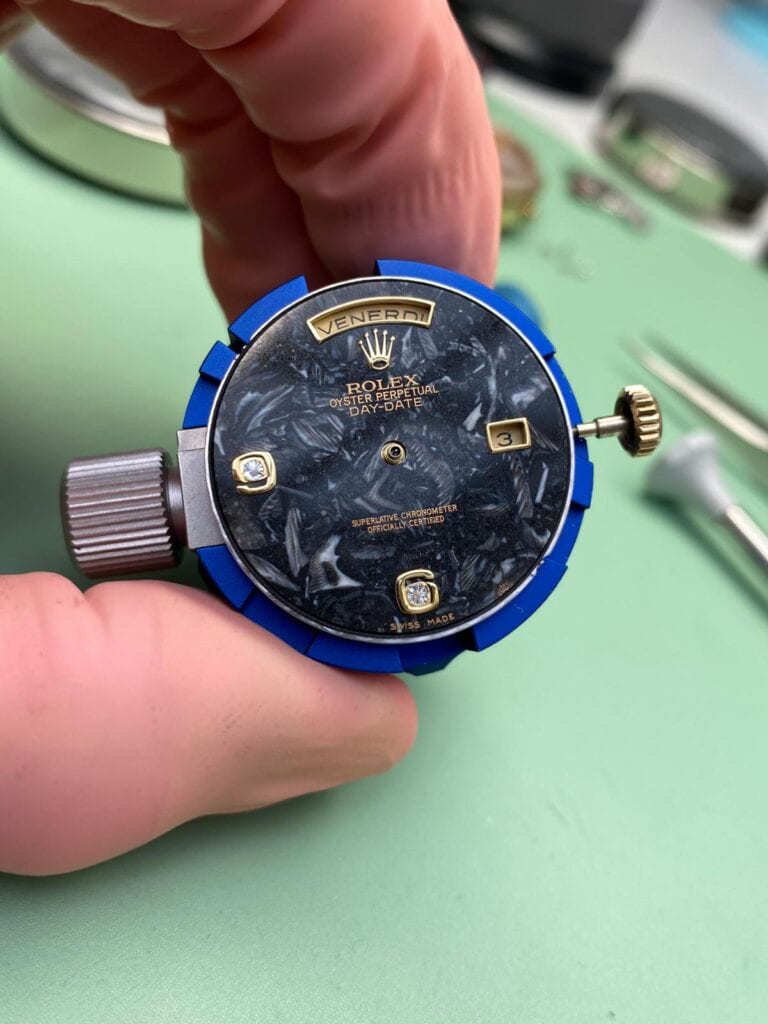We partnered up with Jasper from AmsterdamVintageWatches to bring you the ultimate guide to Rolex Stone Dials, a topic often mistaken but not by AVW’s team!
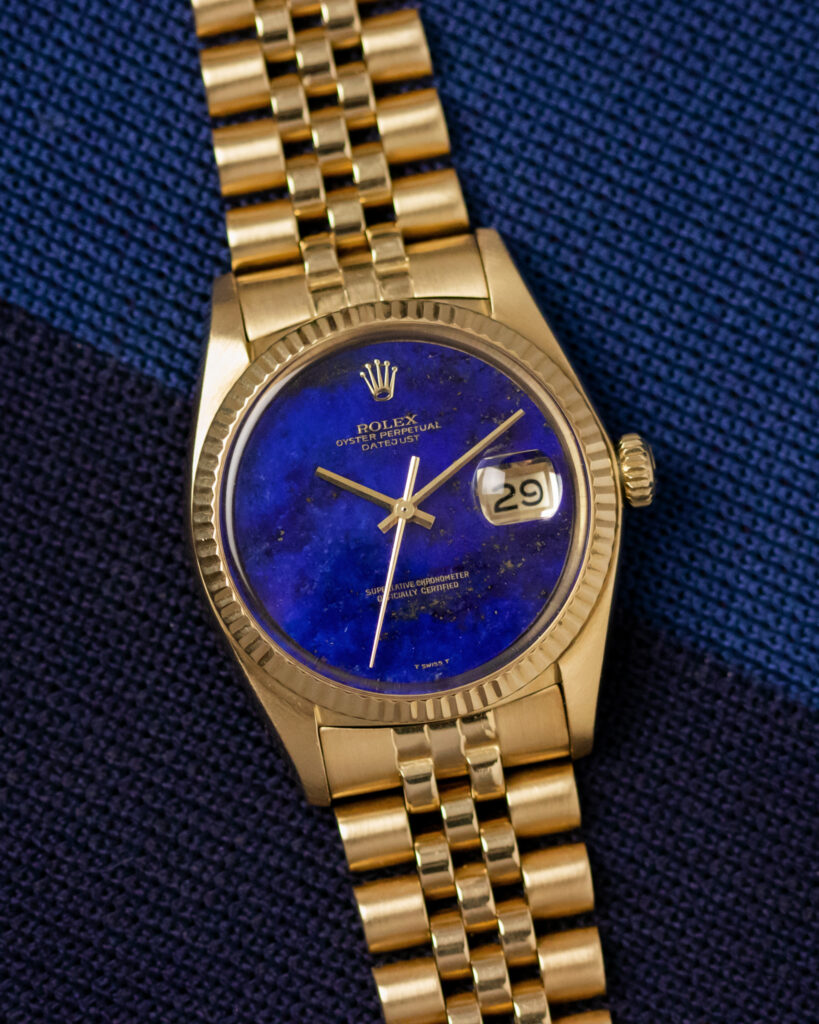
Preface
I studied gemology as my fascination for unique and natural products peaked in my teens.
Apparently, I’m not alone in this; many watch brands have used gemstones.
We all know the sapphire that’s used for many Cartier’s in their crown and surely you have seen a couple diamond set pieces, for example in the bezel, markers or even the bracelets, let alone full pave ones. But I, myself, am most interested in Rolex watches where the whole dial is made out of a “Semi-precious” stone!
Rolex Isn’t the only brand that used stone-dials, one might think about Piaget, Cartier, Patek; just to name a few. Yet, everything Rolex does deserves a study. With my background and education, I feel like the chosen one to present you multiple examples and give you some in-depth knowledge. Unfortunately, there is a lot of misinformation out there and we are here to settle this once and for all.
History:
The use of hardstones for dial making, by Rolex, started during the 70’s. It was unusual for dealers to stock stone-dialed Day-Date’s or Datejust’s but upon request they could order them at additional costs, displayed by this old and rare “Dial code Chart”.
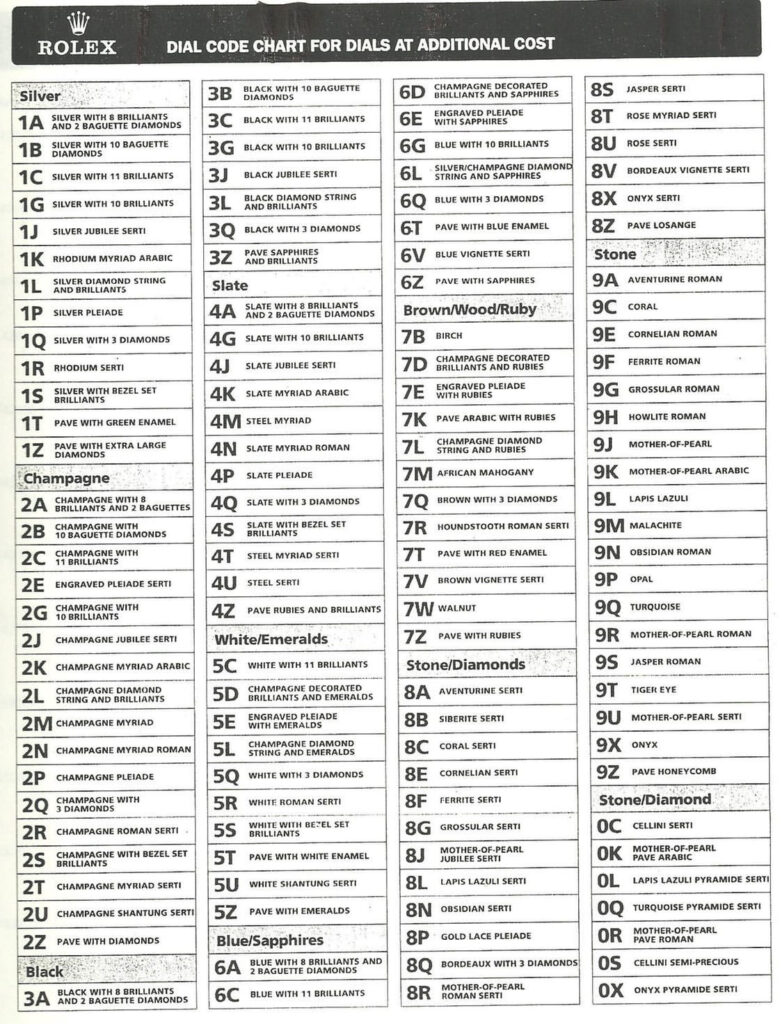
With the introduction of the quickset date function in 1978, Rolex continued the use of stone-dials for their 5-digit reference Day-Date and Datejust’s.
In the 90’s, 2 other model lines could be possibly fitted with a unique stone dial: the Submariner 16618 and precious metal Daytona’s. Even in the current line-up we can still find stone-dial Daytona’s and a couple of Day-Date options, but we will have a look at our favourite 10 stones used as a dial in the history of Rolex.
Configurations:
Depending on the stone and model the dial was made for, there are different varieties regarding the lay-out and execution.
Except stone-dial Daytona’s, since they don’t feature any calendric function, the date and/ or day aperture is framed with the same material as the case and coronet, it also corresponds with the font. For example: in case of a white font; the frames, coronet and case should be executed either in white gold or platinum.
Frames are also interesting as they display how thick of a slice the stone is. The apertures are drilled in the stone, just like the holes to set the coronet and possibly holes for the markers.
I said “possibly”, since there are many examples of stone-dials that feature no markers at all. Some only have a 6 and a 9, encrusted with a diamond, or a full diamond set index. Regardless, no use of luminous material. Yet, the earliest examples do feature a signature at the 6 o’clock position with ‘T swiss T’, where the “T” stands for Tritium.
Stone dials are usually (not always) also fitted with a closed handset, but Rolex simply used the same cliché for regular dials to stamp the stone, just like the ‘No lume’ dials are also stamped with a T. They later switched to “Swiss” only and late examples plus service dials say “Swiss made”.
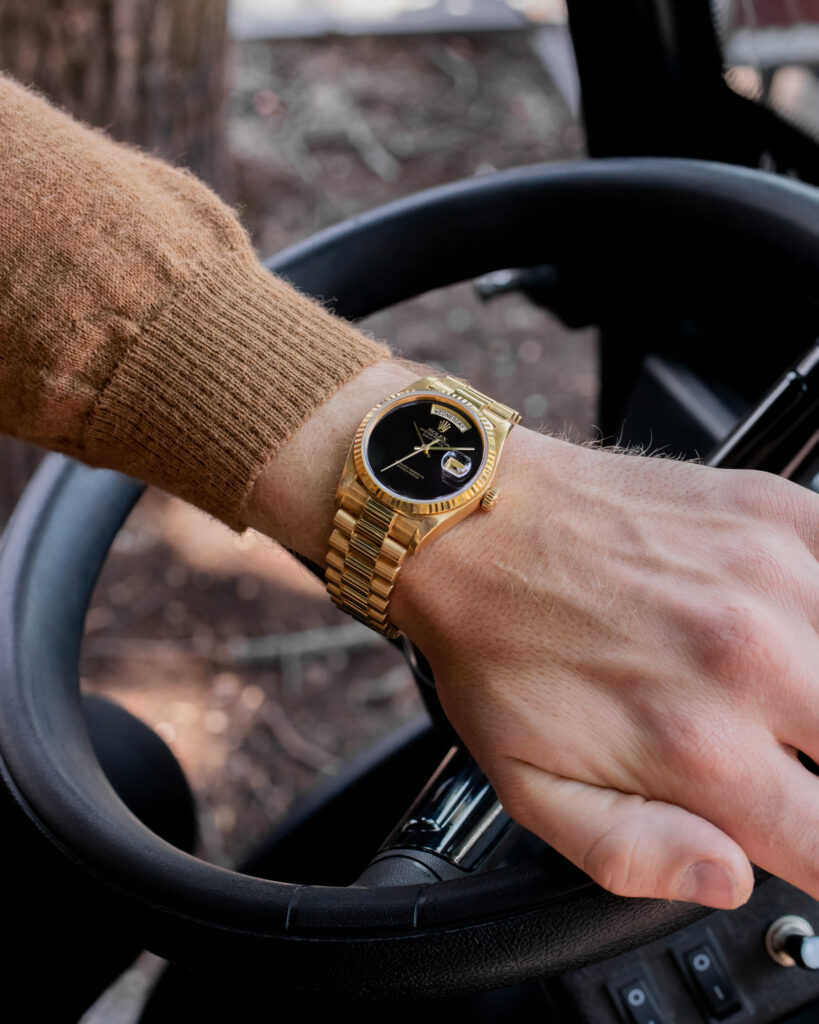
Stones:
Onyx:
Let’s start with the least rare but arguably the most beloved stone: Onyx.
This mineral is a variety of chalcedony that is in fact layered and can display bands in a range of colours. Yet Rolex used solely the deep black parts. Especially the dials without any markers, on the Day-Date and Datejust, are very popular. Rolex later added the possibility of onyx with diamond-set 6 and 9 or all diamond indices.
An often-forgotten Onyx Rolex is the 16618. As goes for al vintage Rolexes, pay attention to details as the hardstone variant of this Submariner is easily mistaken for a regular black dial 16618. Although Onyx reflects the light way different than just black lacquer, it is easiest distinguishable by the framed aperture.
Lapis Lazuli:
Another popular and, compared to some dials in this list, less rare execution is made out of Lapis Lazuli.
It comes in the same configuration possibility’s as the Onyx but tends to be slightly more valuable. The blue colour is very intense and really pops of your wrist when used as a dial. Compared to the Onyx dials there’s way more going on in the form of mainly white and yellow inclusions. Lapis Lazuli is made out of Lazurite and besides Sodalite it often contains Calcite (white) and Pyrite (yellow). This mix results in a playful dial surface.
Just like the Onyx, the gold Sub also knows a rare edition with a Lapis dial. But the sport model that really takes the cake, at least when it comes down to the price, is the Lapis Daytona. A unique example in platinum was sold by Sotheby’s in 2020 and resulted in a record price of over 3Million USD all-in. Shortly after, this auction house again announced the sale of a possibly unique Zenith Daytona with Lapis Lazuli dial, this time in yellow gold. For reasons unknown this lot was withdrawn.
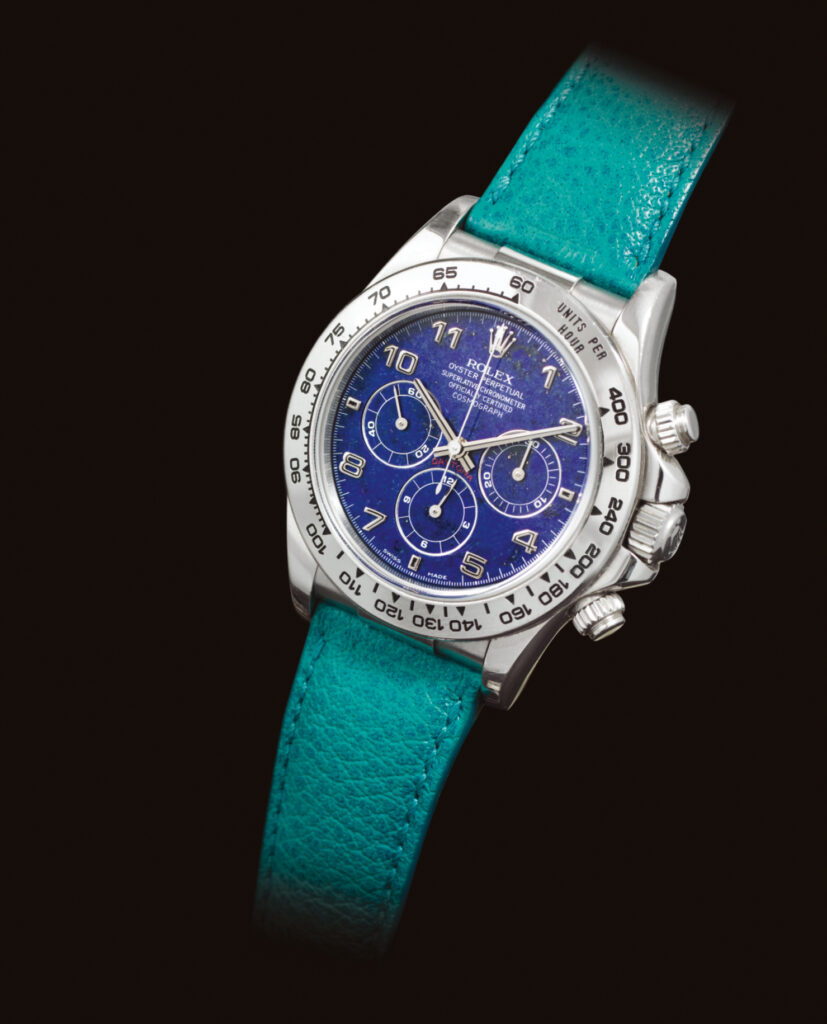
Malachite:
Malachite has been used for many decorative objects in ancient history as it has such a vibrant green colour. Different shades in bands run over the dial, kind of like green waves.
The Day-Date varieties are always without any markers so you can really appreciate and enjoy the unique patterns. The use of malachite by Rolex turned out to be long-lasting as it was used from mid 70’s until today but solely for the Day-Date and Datejust.
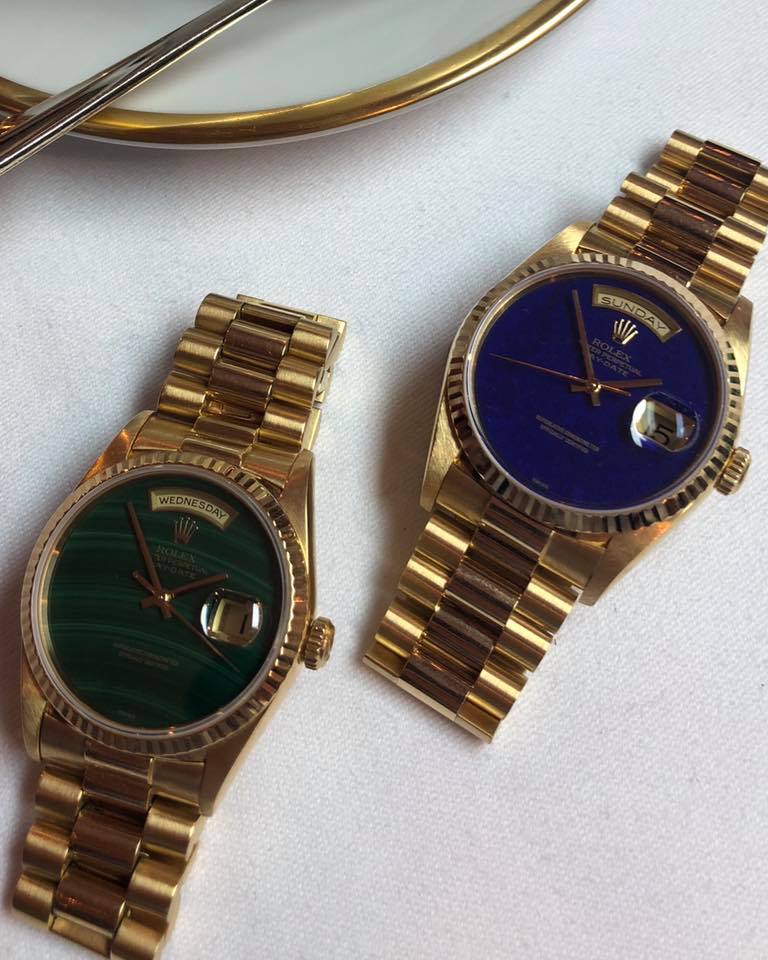
Tiger eye:
Together with Onyx, Lapis and malachite, they form the most common stones used for Day-Date’s and Datejusts.
The special effect this quartz variety has is it’s chatoyancy, caused by the fibrous structure of the mineral. The light reflects in different angles in a silk-like manner. Needless to say, this looks quite breathtaking in a watch.
Unlike previous stones, tiger-eye dials have been found exclusively in yellow gold, either Datejust or Day-Date and always without any markers. So a brown/ yellowish dial with gold hands and no markers isn’t very legible, but who cares about the time anyhow.
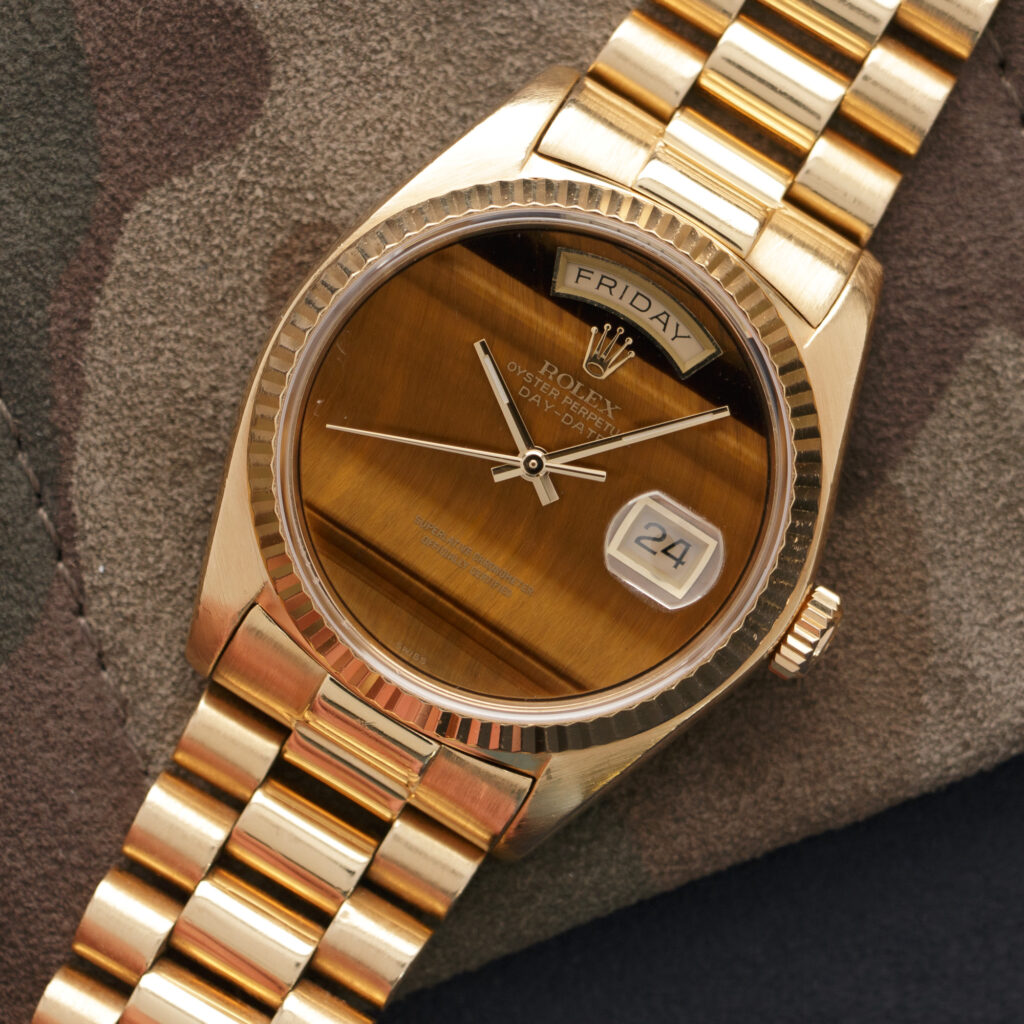
Pyrite
Pyrite was added rather late to the arsenal of options for stone dials. Therefore, not mentioned in the dial code chart from the 80’s. In fact, only 2 Day-Dates are known to sport this interesting dial, both with 10 diamond markers and executed in yellow gold.
Pyrite is a sulfid mineral that can be unstable when found in the earth surface and back in the days was sometimes used to ignite early firearms. Because it has a metallic lustre and yellow hue it is known as “Fools gold”. It might look somewhat similar but isn’t anything like it and in fact next to worthless. Not when it is incorporated in your Day-Date tho, look how cool this “Milkyway” kind of dial looks!
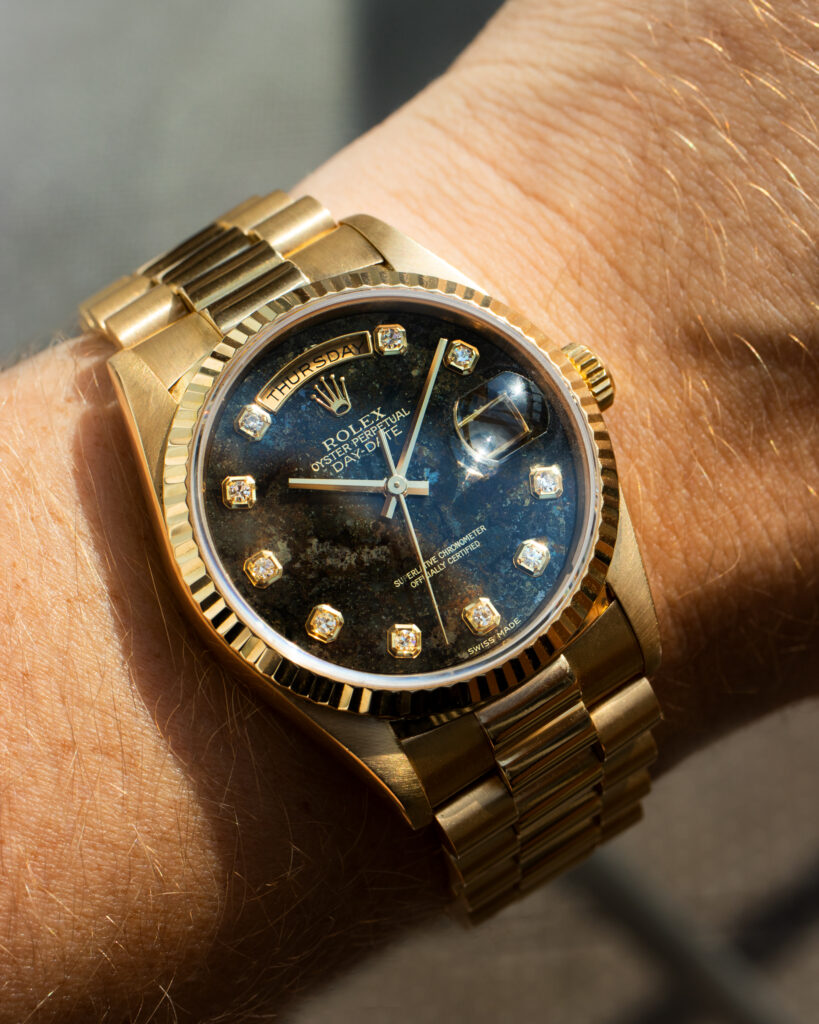
Sodalite
The interesting part about the Sodalite dial is that it was reserved for steel Datejusts, where most stone-dials are either for Day-Date’s or gold Datejusts instead. Another notable part are the graphics on these sapphire crystal Datejusts. Depending on the shade of the dial, Rolex used white or black text respectively for dark or lighter blue Sodalite.
Howlite
Often mistaken as “Marble”, but this material isn’t anything like what you can find on one’s counter top.
In fact, with 3.5 on moh’s scale it’s way more fragile. The white Howlite does feature similar veins in a spectrum from light grey to black, just like in marble, creating a unique pattern every time. According to my research, 26 so far surfaced, all in 5-digit yellow gold Day-Dates and with Roman hourmarkers.
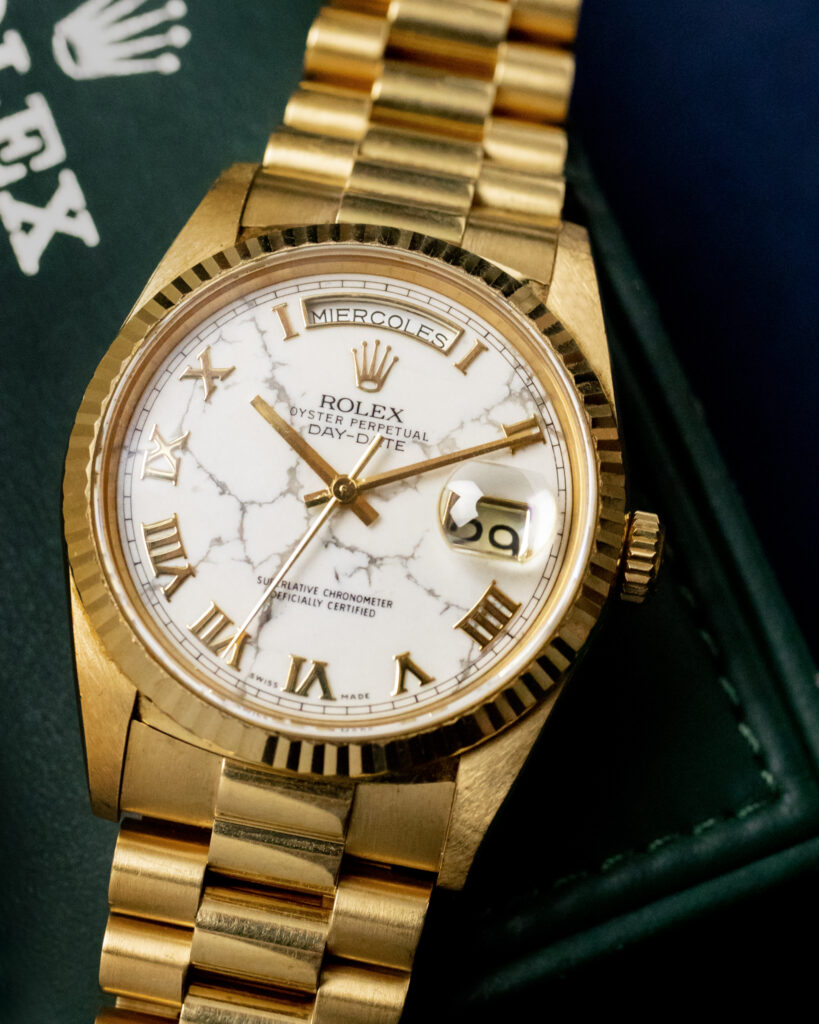
Ferrite
2 Types of Ferrite dials exist. The first serie was made for yellow gold, 5-digit Day-Date’s and less common Datejusts and featured Roman hourmarkers. The current execution is reserved for the Everrose Day-Date and comes with diamond markers in a contemporary setting with brilliant cuts and baguettes at the 6 and 9 o’clock position.
Furthermore, Ferrite knows solely industrial purposes. It’s highly unusual to use it as a ‘stone’ but after treatment it shows interesting aesthetics.
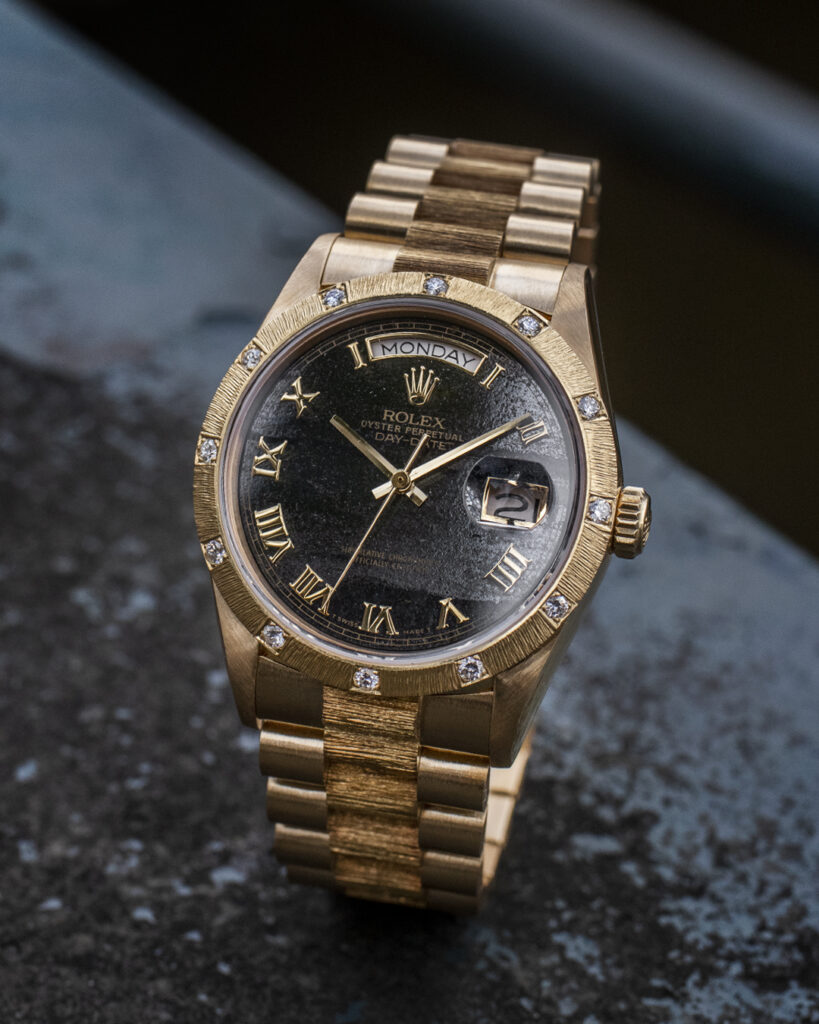
Jasper (Yes, like the author)
Jasper knows a wide range of colours but Rolex used green, the colour most associated with the brand, therefore grew exponentially in popularity over the past years.
The most popular execution is the one without any markers, but again also a Roman and a diamond-set version exists. Usually in a yellow gold Datejust or Day-Date, but so far 2 examples have been discovered in a white gold Day-Date.
If one can find red spots (inclusions of Hematite), in the green Heliotrope; it is referred to as a Bloodstone.
Fossil
Fossil face Day-Dates are also called “Jurrasic Parks”, and if you don’t guess why, I’m worried.
Only a few are known and they come in 2 shades. The scarcity of these Fossil dials is caused by the production process which was extremely hard. All stones are prone to cracking but this one… Carve a thin slice of fossil, then add 10 diamond settings, the gold frames for the apertures and the coronet, add the printing and finish to it, all without cracking the surface. This is also the only stone dial that is signed “T Swiss made T” in case of tritium hands.
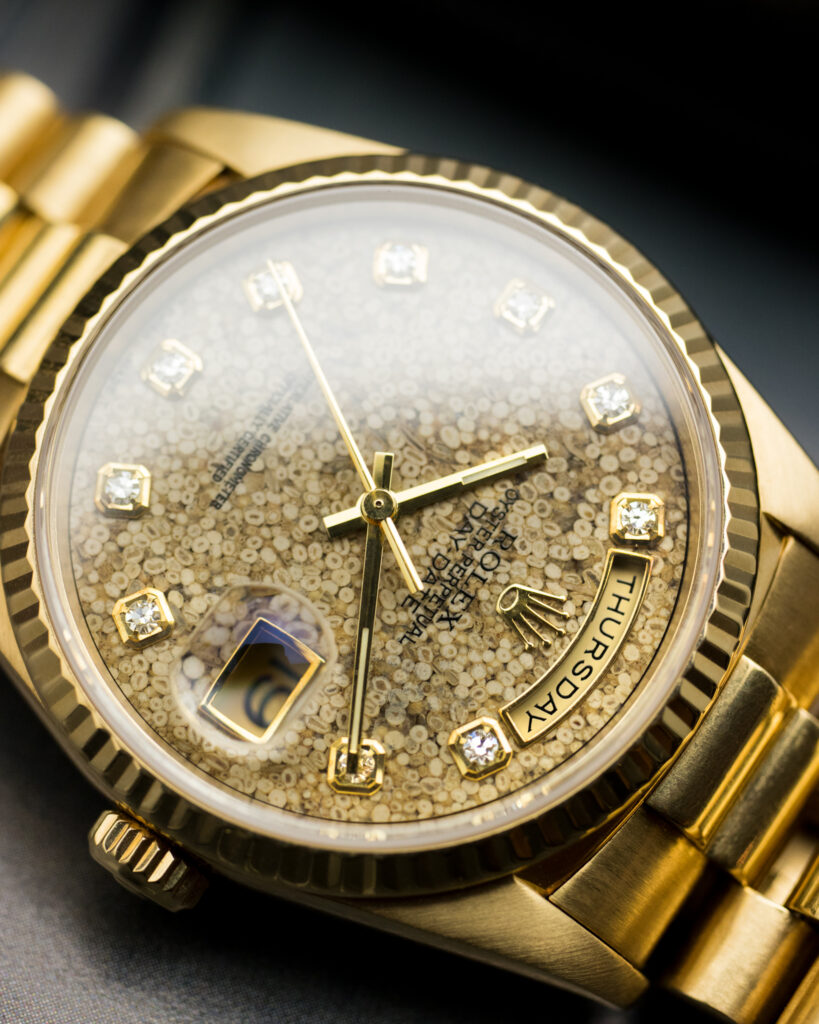
Besides the 2 shades of the petrified small fossils, they later added an “Fossil Ammonite” dial. This one was either with full diamond markers, or again just the 6 and 9.
Holy grails, uh?

